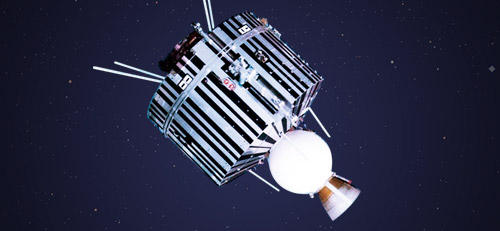| Name (pre-launch in parentheses) | KYOKKO (EXOS-A) |
|---|---|
| International Designation code | 1978-014A |
| Objectives | 1.Observation of density, temperature, and composition of space plasma; research into energy spectrum of auroral electrons; and ultraviolet imaging of aurora 2.Participation in the International Magnetospheric Study (IMS) |
| Launch Date | 16:00, February 4, 1978 (JST) |
| Launch Location | Kagoshima Space Center (Uchinoura) |
| Launch Vehicle | M-3H-2 |
| Weight | 126kg |
| Shape | Cylinder, 95cm in diameter and 80cm high |
| Orbital Altitude | Perigee 630 km, Apogee 3,970 km |
| Orbital Inclination | 65° |
| Type of orbit | Elliptical |
| Orbital Period | 134 min |
| Scientific Instruments | Aurora Imager (ATV) Plasma wave and electron temperature measurement instrument Energy spectrum analyzer for low-energy electrons |
| End of Operation | August 2, 1992 |
| Operation | All the observational instruments onboard KYOKKO were operable and the observation started on February 24. Since it would be inefficient for Kagoshima Space Center (currently Uchinoura Space Center) alone to retrieve data in relation to its locations relative to the satellite orbit, other data-receiving telemetry stations were founded at the Showa Station in Antarctic and the Churchill Research Base in Canada. |
| Results | We obtained aurora image data in the ultraviolet region (1300A) by the Aurora Imager (ATV), a world first. The observation discovered that a disturbance of plasma occurs in the sky when the aurora emerges, emitting strong electromagnetic waves. |



